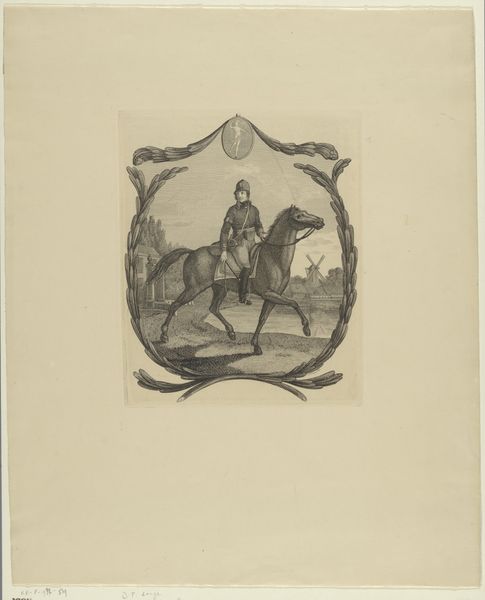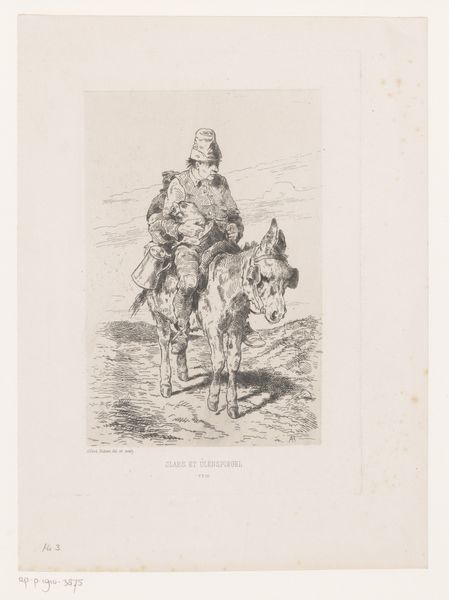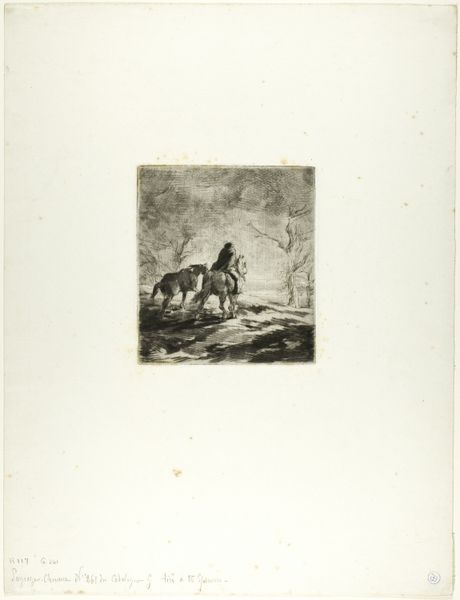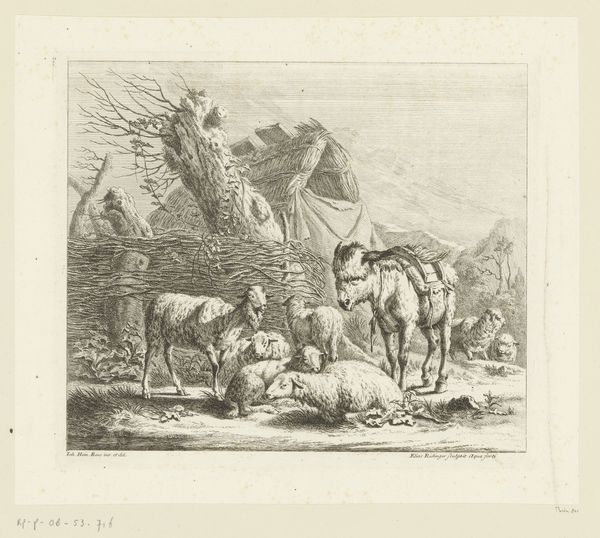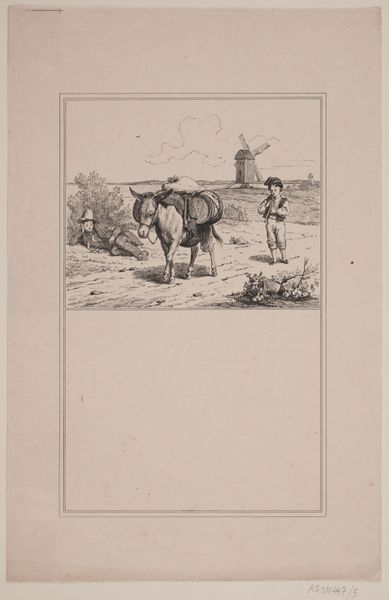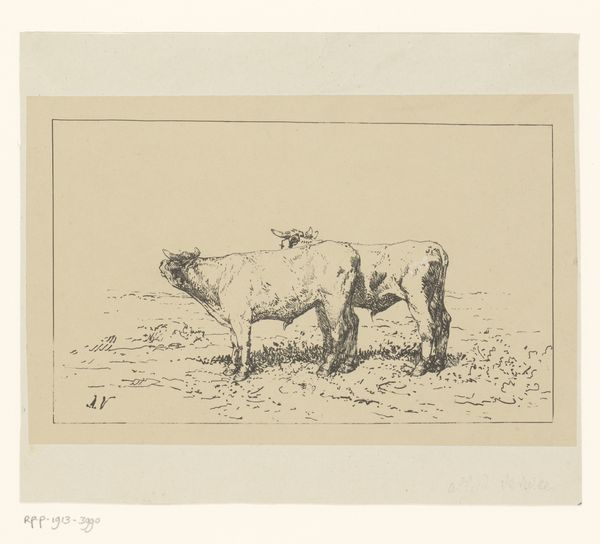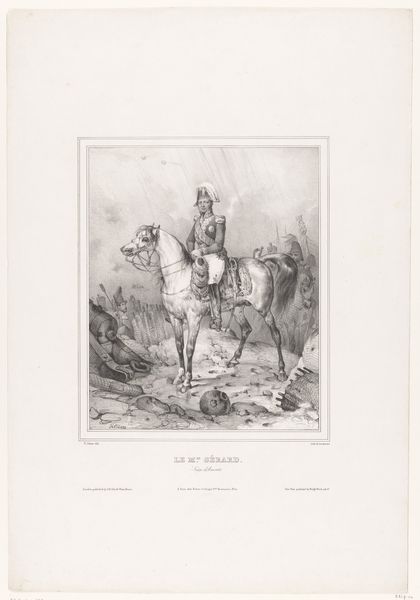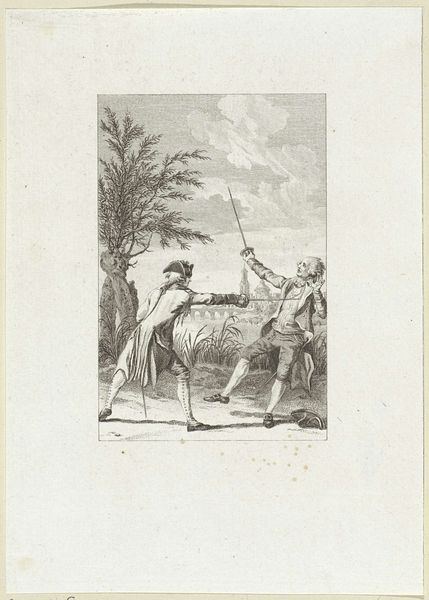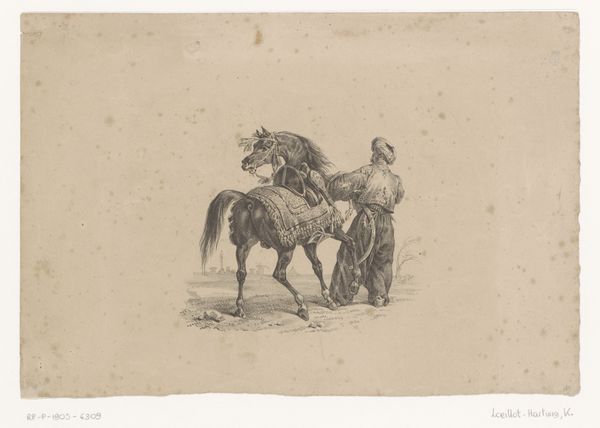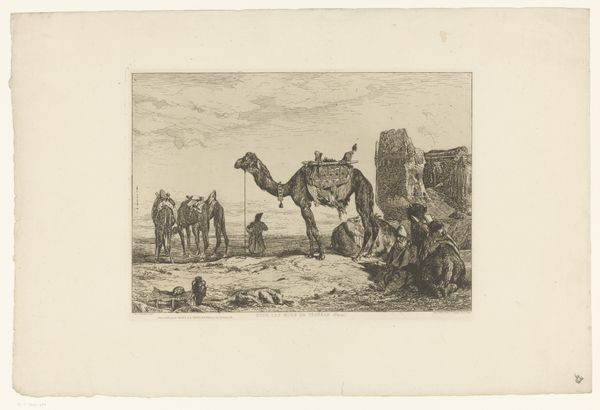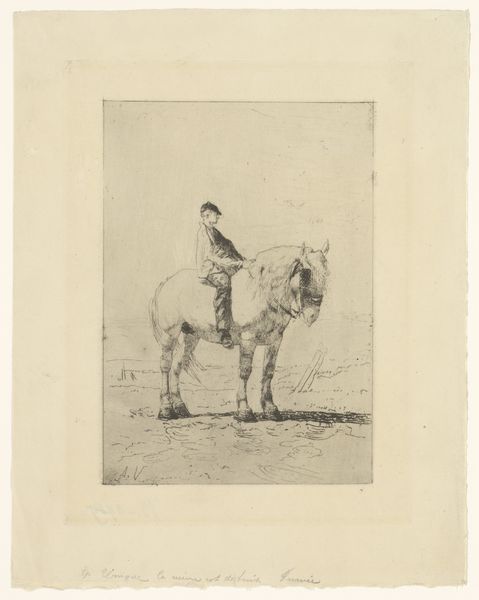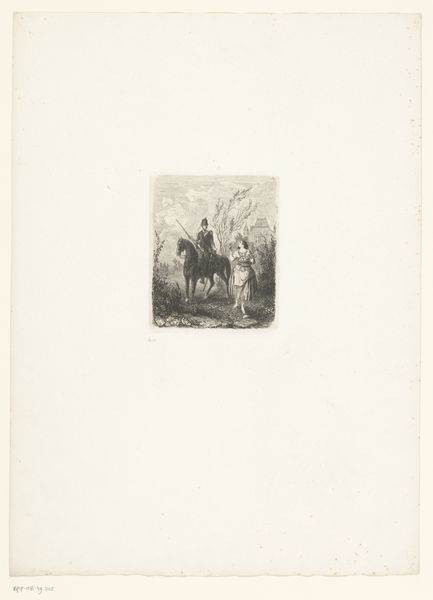
print, etching
# print
#
etching
#
landscape
#
figuration
Dimensions: height 170 mm, width 109 mm
Copyright: Rijks Museum: Open Domain
Vicomte Arthur-Jean Le Bailly d'Inghuem made this print of a dromedary with rider sometime in the 19th century using a technique called etching. Etching is a printmaking process that relies on the corrosive action of acid to create lines in a metal plate. The plate is covered with a waxy, acid-resistant ground, and the artist scratches an image into this ground with a needle, exposing the metal. The plate is then immersed in acid, which bites into the exposed lines, creating grooves. The longer the plate remains in the acid, the deeper the lines become, allowing for variation in the printed image. The fine lines and delicate tonal range visible here are characteristic of etching, allowing for intricate details and subtle shading that capture the texture of the camel’s coat and the rider’s clothing. Etching’s accessibility meant that artists could translate their drawings into multiples, catering to a growing market for affordable art. This print reflects the broader industrialization of art production, where traditional craft skills met the demands of a burgeoning consumer culture.
Comments
No comments
Be the first to comment and join the conversation on the ultimate creative platform.
